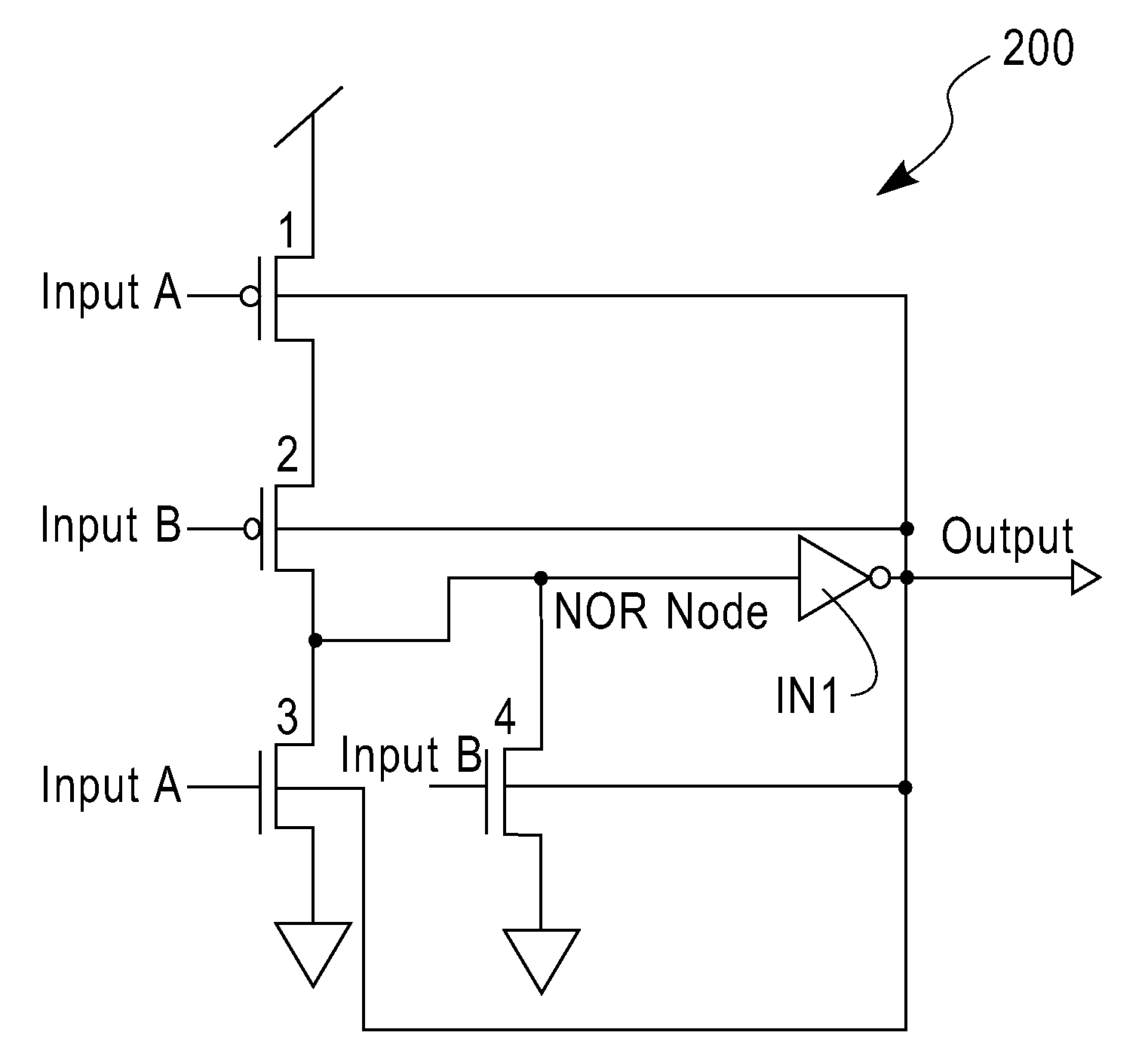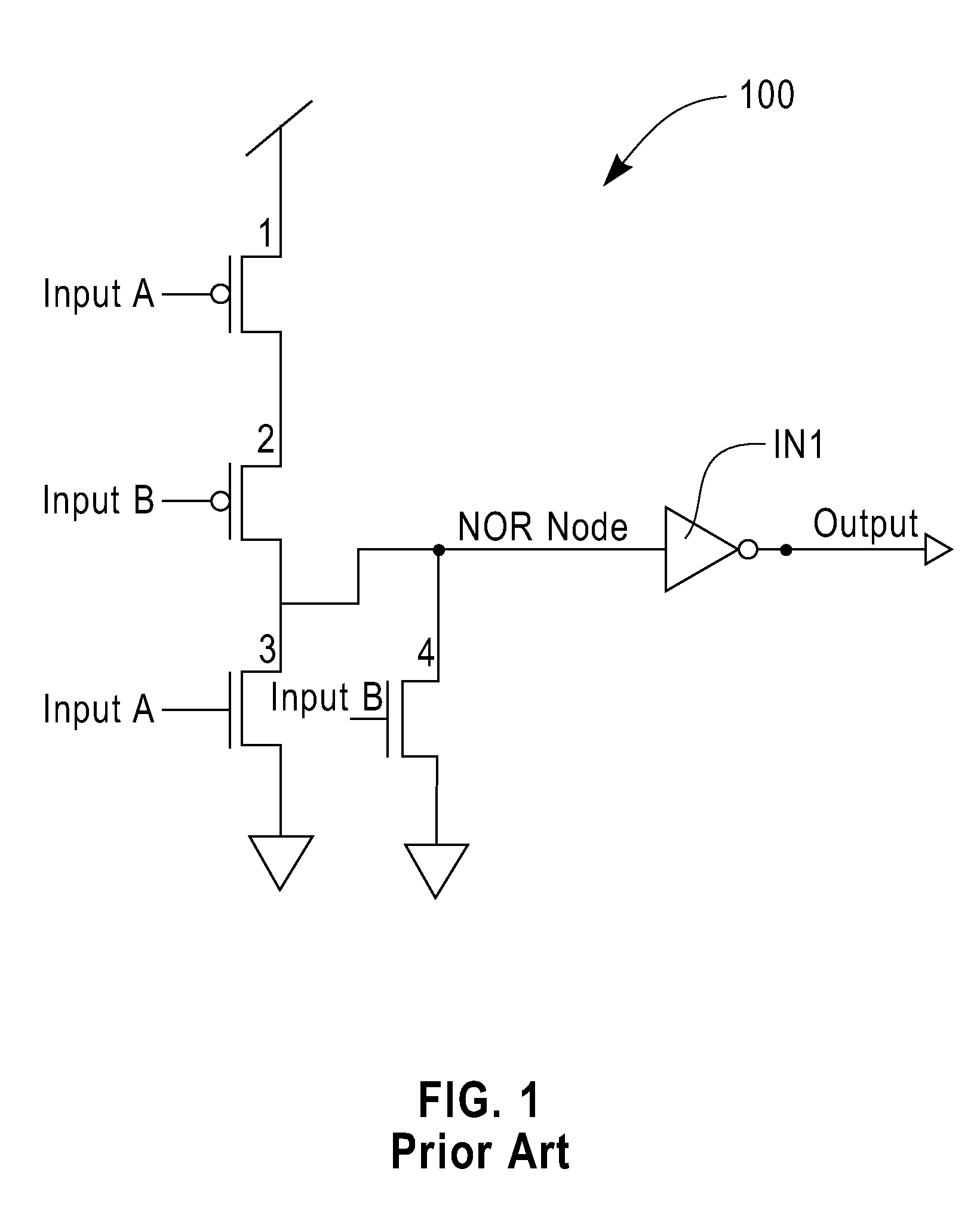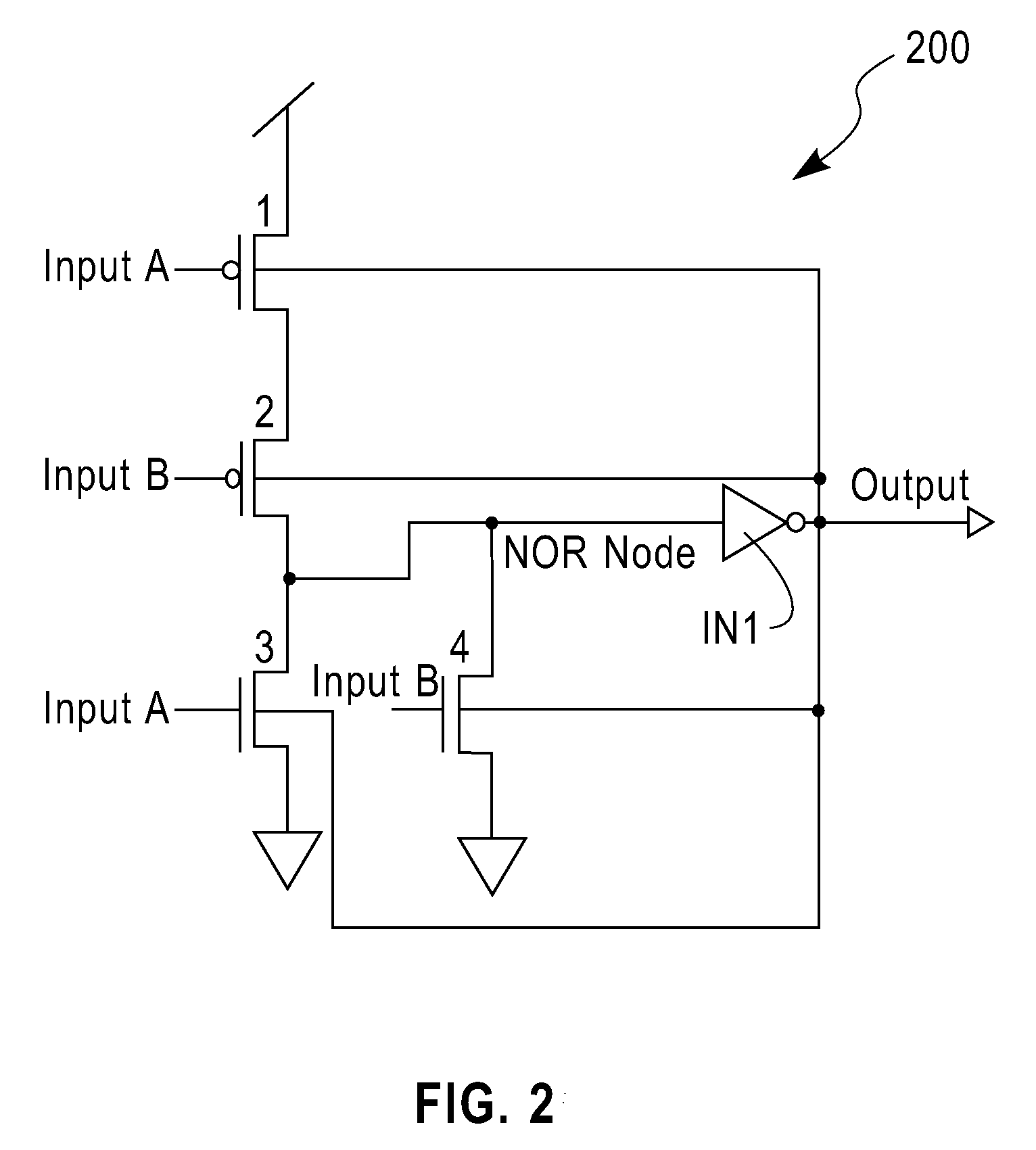CMOS back-gated keeper technique
a backgated keeper and keeper technology, applied in the field of very large scale semiconductor integrated (vlsi) circuits and technology, can solve the problems of negative affecting the timing precision of deep submicron vlsi logic circuits, incomplete transition voltages presented at output buffers, and excessive crowbar current in buffer side, so as to reduce leakage currents and improve noise immunity.
- Summary
- Abstract
- Description
- Claims
- Application Information
AI Technical Summary
Benefits of technology
Problems solved by technology
Method used
Image
Examples
Embodiment Construction
[0024]As mentioned above, the inventive back-gated operation contemplated by the invention may be implemented in any known combinatory logic circuit topology by merely placing a minimum sized inverter on the combinatorial logic circuit output, the output of which is then arranged to drive the back gates of all circuit devices. The effect of the inverted output driving the back gates of all circuit devices is, like DTCMOS, to lower the relative threshold of the “on” device, and elevate the relative threshold of the “off” device. The result is that the “on” devices are on harder, and the leakage of “off” devices is clamped harder thereby improving noise immunity.
[0025]To highlight the inventive operation, attention is directed to prior art FIG. 1, which is a schematic representation of a simple 2-way OR circuit 100 implemented in standard, static combinatorial CMOS technology. Prior art OR circuit 100 comprises a first PMOS device 1 having a gate input A, a source that may be connecte...
PUM
 Login to View More
Login to View More Abstract
Description
Claims
Application Information
 Login to View More
Login to View More - R&D
- Intellectual Property
- Life Sciences
- Materials
- Tech Scout
- Unparalleled Data Quality
- Higher Quality Content
- 60% Fewer Hallucinations
Browse by: Latest US Patents, China's latest patents, Technical Efficacy Thesaurus, Application Domain, Technology Topic, Popular Technical Reports.
© 2025 PatSnap. All rights reserved.Legal|Privacy policy|Modern Slavery Act Transparency Statement|Sitemap|About US| Contact US: help@patsnap.com



